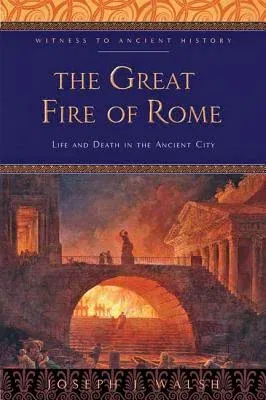A thrilling and momentous account of the Great Fire of Rome and how a
modern city arose from its embers.
Peril was everywhere in ancient Rome, but the Great Fire of 64 CE was
unlike anything the city had ever experienced. No building, no
neighborhood, no person was safe from conflagration. When the fire
finally subsided--after burning for nine days straight--vast swaths of
Rome were in ruins. The greatest city of the ancient world had endured
its greatest blow.
In The Great Fire of Rome, Joseph J. Walsh tells the true story of
this deadly episode in Rome's history. He explains why Rome was such a
vulnerable tinderbox, outlines the difficulties of life in that exciting
and dangerous city, and recounts the fire's aftermath and legacy--a
legacy that includes the transformation of much of ancient Rome into a
modern city. Situating the fire within the context of other perils that
residents of Rome faced, including frequent flooding, pollution, crime,
and dangerously shoddy construction, he highlights the firefighting
technology of the period and examines the ways in which the city's
architecture and planning contributed to the severity of the blaze.
Introducing readers to the grim realities of life in that overwhelming
and overwhelmed city while chronicling its later glories, The Great
Fire of Rome is grounded in the latest scholarship on fire analysis and
forensics. Walsh's multifaceted analysis, balanced insights, and
concise, accessible prose make this book a versatile teaching tool.
Readers interested in ancient (and modern) Rome, urban life, and civic
disasters, among other things, will be fascinated by this book.

